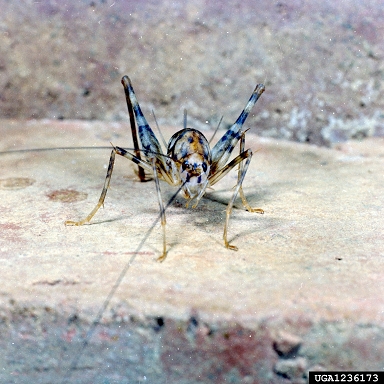Meet the Camel Cricket…or Spricket
By Chris Williams on September 12, 2014.
 Ever heard of a spricket? It’s a catchy term coined to describe the camel cricket. It’s actually short for “spider cricket”. Although the mottled brown camel cricket is not related to, and has nothing to do with, spiders, many people think it looks like a spider with its long legs and arched back.
Ever heard of a spricket? It’s a catchy term coined to describe the camel cricket. It’s actually short for “spider cricket”. Although the mottled brown camel cricket is not related to, and has nothing to do with, spiders, many people think it looks like a spider with its long legs and arched back.
Late summer into early fall is the time of year that camel crickets really make their presence known in New Hampshire and Massachusetts’ homes. These crickets don’t have the annoying chirping habit of other household crickets, but they do have a scary habit of jumping randomly in any direction when disturbed.
Your Camel Crickets May Be Imposters
A recent research survey of camel crickets throughout the U.S. resulted in an interesting finding. Our native variety of camel cricket in the genus Ceutophilus has quietly been displaced by an invasive species. This invasive camel cricket, Diestrammena asynamora, has been in the U.S. since the 1800’s but it was thought to be established only in greenhouses. Surprisingly, the survey found that in North Carolina, for instance, 92% of the households with camel crickets had the invasive greenhouse cricket.
Camel crickets often move indoors to escape drier outdoor conditions. For that reason, sprickets are found mostly in cool, moist areas like basements, crawlspaces, laundry rooms, and garages. Fortunately, they are rarely found in the drier, upstairs living spaces. Turning on the heat, or placing fans or a dehumidifier where they are found will dry the indoor air and speed up their demise.
Camel crickets are scavengers, they’re not picky eaters, and it doesn’t take much to feed them. They’ve been reported to feed on everything from American cheese to pet food to human feces to rotting fruit to other camel crickets. In homes, they can sometimes damage linens and clothing with their feeding and their feces.
If camel crickets are bothering you and scaring the children, give Colonial a call. We can treat the areas in your home where they are hiding and can also apply a preventive perimeter treatment around the outside foundation of your home to keep them from getting inside. For more on sprickets, see the Annual Return of the Camel Crickets.
Image: Clemson University – USDA Cooperative Extension Slide Series, Bugwood.org